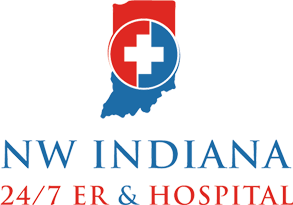Food labels can be tricky. Here is a quick guide to understanding the most common labels and what they really mean.
A simple trip to the grocery store can become confusing when you go in for one item and realize there are three options, all labeled differently. What do the labels mean? What food item do I actually want?
Understanding food labels can be a little tricky, especially as more and more terms are coming about. Also, we may have an idea of what a label means but end up being completely wrong. This is not all our fault, as food corporations use deceptive marketing to make an item seem like it’s something it is not.
This guide will help you understand what food labels really mean and how they affect you to ensure you are making the most accurate and informed decisions when selecting food items.
The 15 Most Common Food Labels & Their Real Meanings
- All Natural: This term does not tell us how the product was created or how the animal was raised like most may think–in a natural way. All-natural means the product has no artificial ingredients or added colors and was minimally processed.
- Caged-Free Eggs: We are correct to think that the bird that produced these eggs lived without cages. However, most chickens are raised “cage-free” and produce eggs inside factory farms.
- Fresh: Simply put, the term fresh means that the meat was never stored in temperatures below 26 degrees Fahrenheit. This term gives no inclination on the processing or preservation quality.
- Fruit-Flavored: This means the item contains chemicals that taste like the fruit it names. No actual fruit was used to make the product.
- Gluten-Free: This means the food does not contain any wheat, spelt, rye, or barley–gluten products.
- Grass-Fed: This term means that the animal product’s source of food comes from grass versus grains. Grass-fed does not eliminate the use of antibiotics or hormones.
- Light: It is important to double-check the ingredients label on “light” food items to see what has been added in replace of reducing the calories and fat.
- Low-Calorie: Yes, the calories are lower, however, only by one-third of the original product’s calorie count.
- Low-Fat: Again, it is important to double-check the ingredients labeled as “low-fat” food items tend to reduce fat and add in other ingredients, typically sugar.
- Multigrain: This may sound like the healthier bread option, but this only means multiple grain types were used versus one.
- No Added Sugar: Contrary to many people’s beliefs, this does not mean it does not contain sugar. This means no additional sugar has been added to the sugar already included.
- No Hormones or Steroids: Federal regulation prohibits hormone or steroid injections into meat production. This label is merely decoration.
- Organic: An organic label tells you very little about the health of a product. However, this label is regulated by the government and must meet certain standards to be considered “organic,” including how they were raised, fed, and processed.
- USDA Inspected: This label is very important as it means that your food has been screened for containments that lead to illnesses. The United States Department of Agriculture deemed the product safe to consume.
- Zero-Trans Fat: Honestly, the product may still include trans-fat, but less than .5 grams per serving.
The product’s nutrition label accurately depicts everything included in the product. Learn more about reading the nutrition label here.
If you find yourself or a loved one suffering from symptoms of food poisoning or an allergic reaction, visit NW Indiana ER & Hospital for immediate care. Our expert team initiates treatment quickly to have you feeling better in no time. We are your emergency room without the wait–open 24/7/365.
Disclaimer: As a service to our readers, NW Indiana ER & Hospital and Nutex Health state no content on this site, regardless of date, should ever be used as a substitute for direct medical advice from y



0 Comments